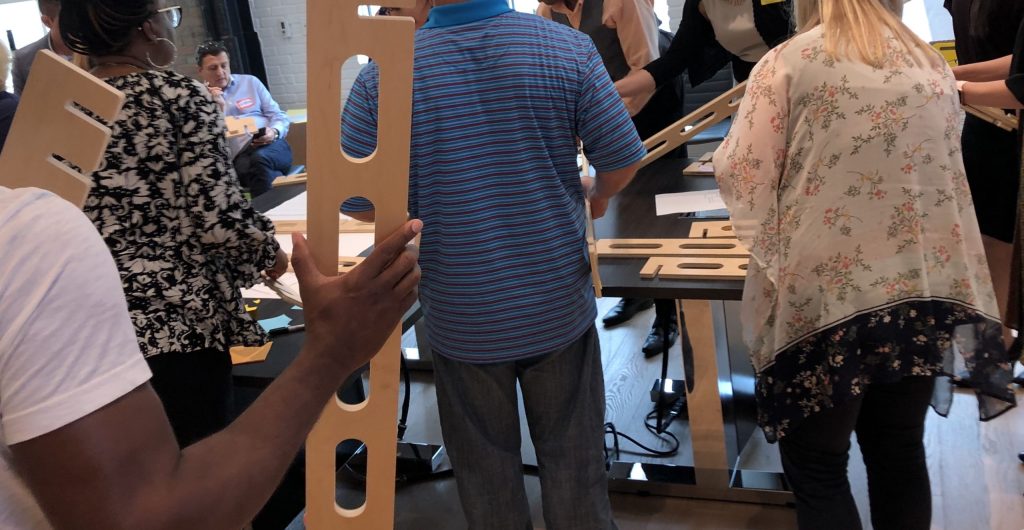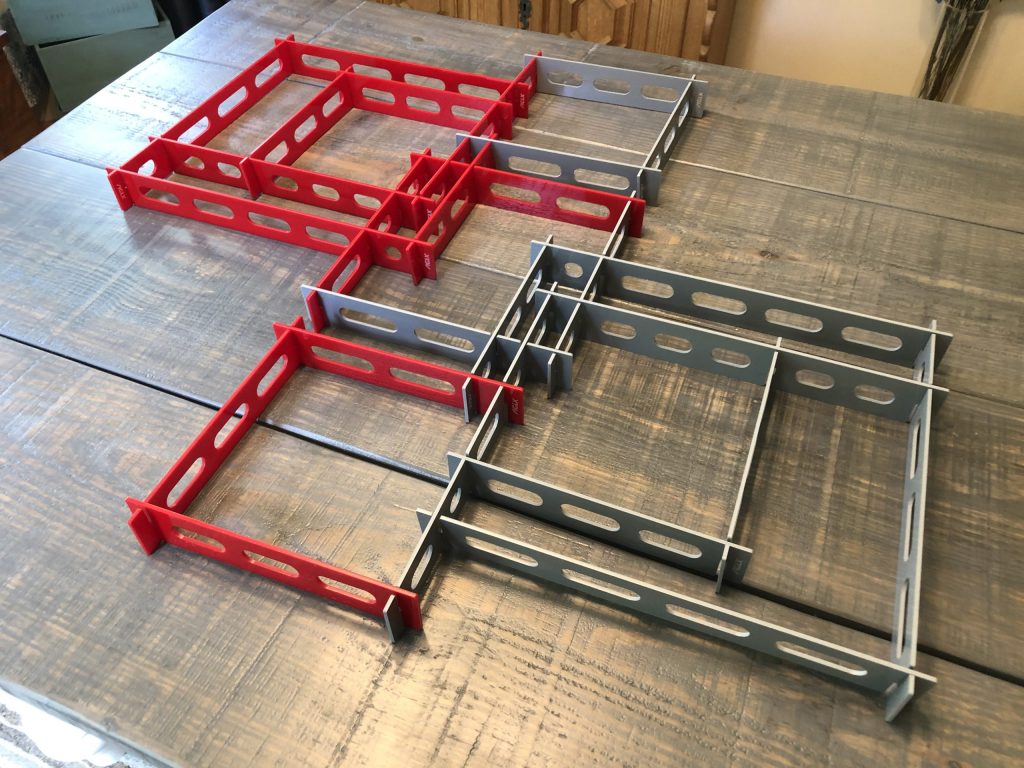
PLANks: A hands-on and fun Team Development Intervention approach that targets the leadership and teaming skills behind organizational resilience, safety, and agility.
We call it PLANks because most organizations and teams do not know how to PLAN. And, the devices we use are planks. See how we did that?
PLANks provide us an interdependent team activity where attendees can experience the evolution of a new product or service, from exploration to exploitation (Agile to Lean), while learning how to plan, communicate, monitor, and debrief.
In Agile Manifesto speak: The focus of PLANks is on interaction development, not framework compliance.

PLANks are part of our High-Performance Teaming™ workshop where we combine computer-based simulations with other experiential learning activities over two and sometimes three days. But who has two or three days to “waste” on learning and practicing the most critical skills needed to create organizational agility, resilience and safety when a two-day course and an open book exam with 35 questions stands between you and three letters behind your name?
If time or current scaling framework fixation is a challenge in your organization, PLANks can be used outside of our High-Performance Teaming™ workshops as an alternative to traditional team building activities to help teams learn how to team (verb).
Scrum and PLANks
We’ve used PLANks as an oblique way to teach and/or reinforce the Scrum framework while focusing on the critical teamwork and leadership skills of communication, planning, briefing, situational awareness, and debriefing. You know, that “soft” stuff that actually matters. Since Scrum is a team framework, and most Scrum training hand-waves the most critical part, teamwork, PLANks are a fantastic add to current Scrum training or a stand alone approach to focusing on what really matters, the processes and shared mental models that turn a team of experts into expert teams.



PLANks in Construction?
As the construction industry moves toward a production approach, leadership and teaming skills need to be place to take advantage of Lean tools such as the Last Planner System®. In Construction Partnering sessions, we’ve used PLANks as a foundation to help leadership teams set goals, resolve disputes, and improve project outcomes.
Our Secret Sauce: It’s Called an “Intervention” for a Reason
Teamwork must be learned, practiced, and reinforced. If this is new information to you, you probably are not familiar with Team Science. Team Science also tells us that Leadership (verb) is a component of teamwork.
Much of the research on team science comes from commercial and fighter aviation, and the military. We happen to have military aviation backgrounds. Our secret sauce is how we blend Team Science with PLANks to help teams:
- Build shared mental models of planning
- Use that shared mental model of planning to improve briefs, meetings, and daily scrums
- Build situational awareness through effective debriefing and monitoring
- Make sense with in-situ SenseMaker® Pulses for use in debriefing
- Challenge assumptions using Red Teaming exercises to help elicit customer feedback and develop better plans
- Apply the ZONEFIVE™ Team Performance Indicator to enable guided self-correction
- Build and experience an expert shared mental model of debriefing
- Learn from failure: We learn more from failure than we do from success [Insert Foot Stomp Here]
Got Team of Teams? Got a Multi-Team System?
We have a scaling approach for that. We call it “Scaling PLANks.” Why? Because you scale teamwork, not frameworks.



We’ve used the scaling PLANks approach to help teams:
- Work across silos
- Understand why those who do the work should plan the work
- Improve Meta Scrums
- Improve Scrum of Scrums
- Improve listening skills
- Work as a a team of teams
- Transfer lessons learned
- Scale effective debriefing approaches
- Improve meetings
- Learn Red Teaming Techniques
- Stimulate their internal social network
- Focus on value delivery
- Work with customers
- Improve handoffs



